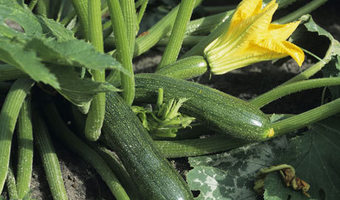 Joseph Magami is an urban farmer based in Kawempe, a Kampala suburb. For over three years, Magami has been planting egg plant and Nakati in his quarter acre plot for home consumption. However, the introduction of Magami to Zuchini (Courgette) eight months ago is changing fortunes for the father of three. He currently reaps over Ush5 million per harvest from his plot thanks to the adoption of Zuchini, a high value crop.
Joseph Magami is an urban farmer based in Kawempe, a Kampala suburb. For over three years, Magami has been planting egg plant and Nakati in his quarter acre plot for home consumption. However, the introduction of Magami to Zuchini (Courgette) eight months ago is changing fortunes for the father of three. He currently reaps over Ush5 million per harvest from his plot thanks to the adoption of Zuchini, a high value crop.
Magami is among a group of innovative farmers in Uganda who are fast adopting the cultivation of courgettes as the demand for the high value crop soars thanks to the fast rising middle class. According to Magami, the only challenge to farmers is exposure to the high value crops that are on demand. “Apart from market challenges that every farmer grapples with, most of us are not enlightened to better high yielding crops and therefore labour with the traditional maize and beans which at the end fetch so little in the market because they are done by everyone. Therefore information on what crops are high value and where to source for their inputs including skills on the right husbandry is vital for farmers.”
Magami was introduced into courgette farming by Farming Solutions an organization that also supplies the seeds and other inputs needed for growing the crop. He adopted the crop although initially very skeptical about the returns, yield and even the market. However the success he got from the first season pushed him to increase the acreage on which to grow the crop. I got a bumper harvest and I even never labored to source for the market because traders from Nakasero market came for it from the farm. A sack retails around Ush250000. Magami’s first harvest gave him over 20 sacks.
The process of growing zucchini is best done with direct planting of the seeds as transplants generally don't do well if their roots are disturbed. 1000 seeds which retails at Ush290000 are able to grow an acre piece of land. Once seedling plants are established, mulch around the plants. Mulching helps to keep the ground temperature stable and also helps the soil to retain water. These two things will help the zucchini plant have an earlier and larger crop.
Make sure that your zucchini plants get at least 5 litres of water a week during the dry season. Magami advised that for those farmers who do not receive enough rainfall to do this to supplement with manual watering. “It’s advisable to use drip irrigation method to water the plants below their leaves. Watering using a sprinkler can cause the zucchini plants to develop powdery mildew,” added Magami.
Harvest zucchini squash when the fruits are small. This will result in a more tender and flavorful squash. The squash are usually harvested while they are still immature as the seeds are smaller and the flesh is tenderer. Zucchini plants will continue to produce for several weeks as long as you keep picking them.
The Zuchinni Squash is a variety of cucurtbit, which means it's from the same family as cucumber, squash and melon. It is the most popular vegetable of the squash family, being extremely versatile, tender and easy to cook.
Globally, Spain is the world’s leader in growing of Zuchini Squash with an estimated 300,000 tonnes per year. This earns the country over 200 million Euros. In Africa, Morrocco leads the pack in terms of growing and earnings from Zuchini squash with a production of over 50 tonnes per year earning it about 25 million euros from exports.
















Comments powered by CComment